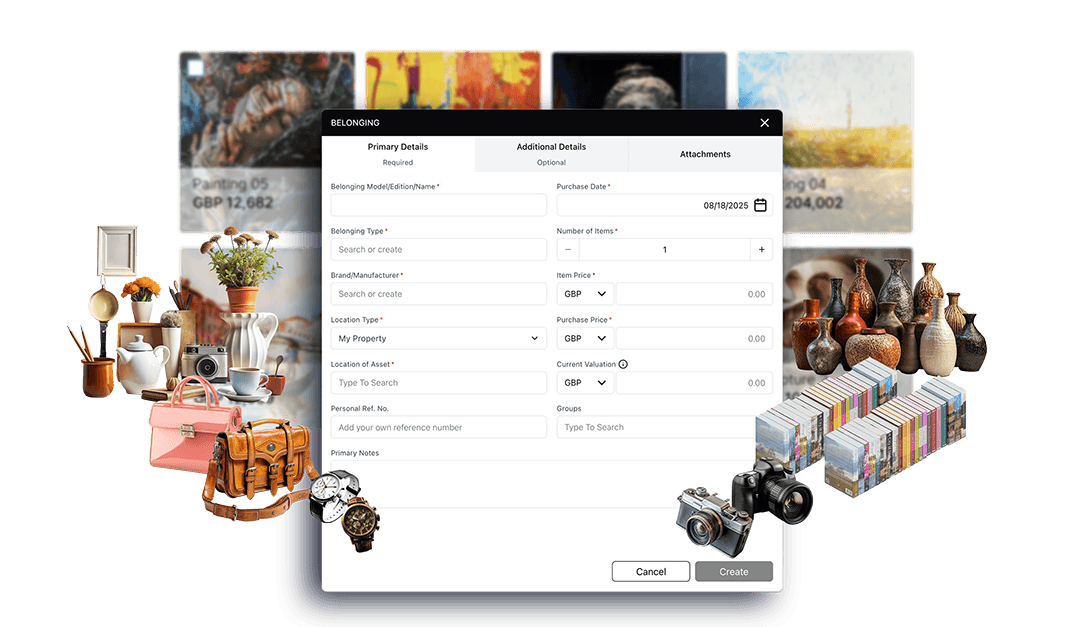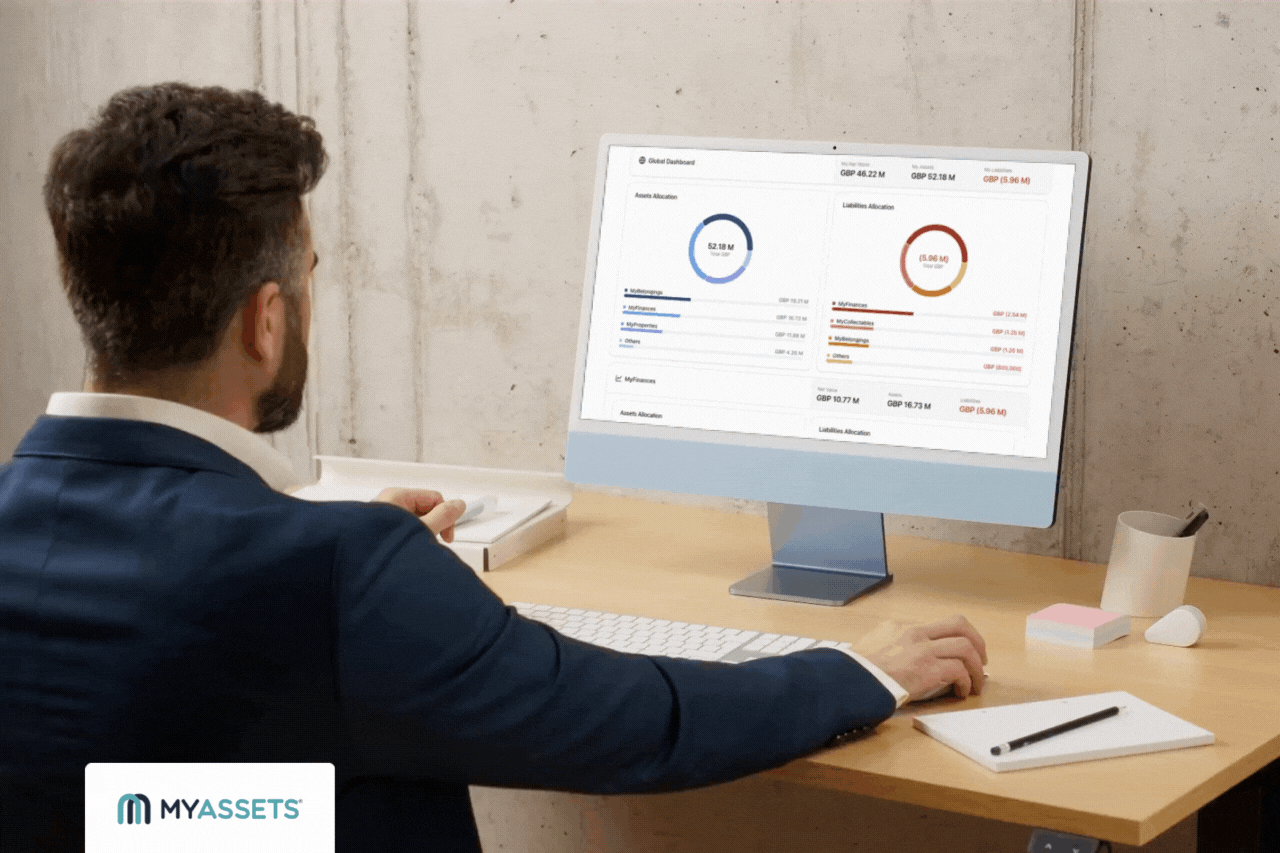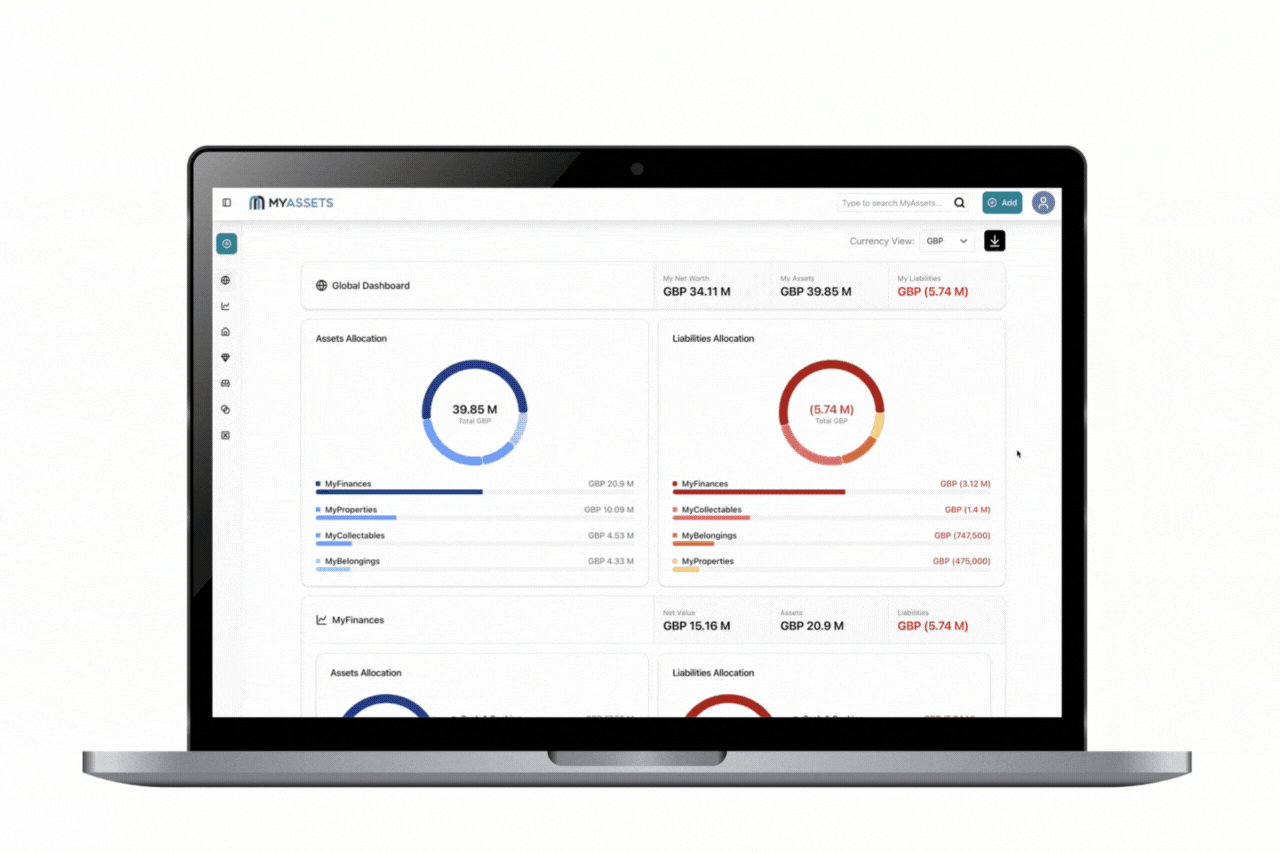As life becomes increasingly fast-paced, managing physical assets – from real estate and machinery to art collections and essential inventory – may feel burdensome.
Alarmingly, a digital marketing agency, ProfileTree, reports that 43% of small businesses fail to monitor and create a proper inventory of their assets, signalling a critical need for improved physical asset management practices.
While physical assets are commonly associated with businesses, the principles of physical asset management are equally applicable to individuals. Just as a company needs to track its equipment and resources, individuals must also monitor their homes, vehicles, valuables, and everyday possessions.
From ensuring the maintenance of a personal vehicle to safeguarding a family heirloom, the need for organised and efficient physical asset management transcends the business world, impacting personal finances, security, and overall well-being.
Are you struggling to organise your physical assets? Find actionable solutions in this article, which explores practical ways to manage assets. It covers everything from physical asset inventory to asset management systems, helping homeowners streamline their asset management process.
- What is Physical Asset Management?
- Benefits of Managing Physical Assets
- Managing Physical Assets: Step-by-Step Guide
- Create a Personal Inventory
- Categorise Physical Assets
- Implement a Digital Inventory System
- Secure Important Documents and Certificates
- Review and Update Inventory
- Future-Proofing Your Physical Assets: The Power of a Well-Managed Inventory
- Physical Asset Management: Frequently Asked Questions
What is Physical Asset Management
Redbeam, a provider of asset tracking software, defines physical asset management as a process where businesses maximise asset value while simultaneously minimising the total cost of ownership, including acquisition, maintenance, and disposal of tangible assets.
Similarly, physical asset management correlates with how individuals manage their resources. Just as a business seeks to maximise the value of its equipment and minimise expenses, individuals strive to optimise the use of their homes, vehicles, and possessions to ensure longevity, efficiency, and financial prudence.
This raises a fundamental question in physical asset management: What are some examples of physical assets?
According to The Birla Institute of Technology and Science, physical assets are those goods that can be seen or touched, such as the following:
- Buildings
- Equipment
- Gold
- Land
- Machinery
- Silver
- Vehicles
Physical assets are further classified into:
- Appliances
- Art
- Collectables
- Electronics
- Equipment
- Tools
Regardless of its category, the inherent decline in the value of physical assets, whether due to wear and tear or obsolescence, underscores the relevance of physical asset tracking and management. By monitoring age and condition, individuals can maximise the remaining value of their investments.
Also Read: The Best Collectables To Add In Your Investment Portfolio
Benefits of Managing Physical Assets
Physical asset management delivers additional benefits beyond its core function of maximising asset value and mitigating risks. Here are a few notable benefits:
Increase Visibility
Homeowners or individuals who manage their physical assets gain an increased visibility, often beginning with a comprehensive physical asset inventory. Creating an inventory involves documenting each asset's location, current condition, ownership details, and valuation.
This asset database then serves as a centralised repository of information, enabling homeowners to access relevant information quickly.
Reduce Loss
Physical asset tracking allows individuals to reduce potential loss due to theft, damage, or neglect. By maintaining a detailed inventory, including relevant certifications or appraisals, one can prevent assets like art or jewellery from losing value due to a lack of proper documentation.
Read More: From Acquisition to Display: How to Track Your Art Collection
Enhance Decision Making
Generally, managing tangible assets equips individuals with reports and analytics that show valuation, condition and other pertinent information that supports crucial decisions.
This data-driven approach enables proactive and strategic financial planning by offering insights that optimise resource allocation and align with long-term financial goals.
Managing Physical Assets: Step-by-Step Guide
The fundamental idea of physical asset management is to maximise value and minimise costs, whether for a homeowner or a large corporation. Thus, a systematic approach is essential to streamline this process. Here's a step-by-step guide to managing physical assets:
Step 1: Create a Personal Asset Inventory
As the accumulation of personal assets – such as electronics, artwork, wine, jewellery, furniture, and automobiles – increasingly grows, personal asset inventory becomes essential to maintain precise records.
Beyond basic itemisation, a complete personal asset inventory demands detailed information. This leads to the question: what specific information is crucial for a physical asset inventory?
To ensure a comprehensive list, the following data points should be documented:
- Asset Type
- Belonging Model/Edition/Name
- Brand/Manufacturer
- Current Valuation
- Item Price
- Location
- Number of Items
- Custom Tags or Personal Reference Numbers
- Purchase Date
Individuals ensure accurate tracking and valuation of physical assets by documenting these key details within a personal asset inventory. This establishes a comprehensive record that safeguards their possessions for future needs, insurance purposes, and potential estate planning.
Step 2: Categorise Physical Assets
Given the comprehensive list accomplished in the previous step, organising it into categories transforms a diversified collection of items into a manageable and insightful overview of one's assets.
This process goes beyond simple labelling; it involves establishing a logical framework that reflects the nature and purpose of each asset.
To effectively categorise, one should consider:
- Asset Type: Broad categories like electronics, furniture, jewellery, artwork, vehicles, and collectibles provide a foundational structure.
- Location and Accessibility: Categorising by location (e.g., "apartment," "home," "office") enhances visibility and streamlines retrieval.
- Purpose and Function: Classifying assets by their intended use (e.g., "entertainment," "personal adornment," "transportation") can provide a clearer picture of their contribution to one's lifestyle.
- Value and Liquidity: Distinguishing between high-value, liquid assets (e.g., certain electronics, some jewellery) and less liquid or lower-value items (e.g., everyday furniture) is crucial for financial planning.
As EZO software solutions highlight, categorising physical assets simplifies asset monitoring and organisation, making it a cornerstone of asset management.
Step 3: Implement a Digital Inventory System
A legal document provider, Law Depot, advises that while a basic personal asset inventory can begin as a handwritten list, its practicality diminishes with frequent changes in possessions.
With that in mind, it becomes clear that implementing an asset management solution is essential for maintaining an accurate and up-to-date inventory. To simplify this process, leveraging specialised tools is paramount.
These tools streamline organising, tracking and managing assets, with examples below explaining their purpose:
- Spreadsheet: A versatile digital table for organising and tracking asset details (type, value, location). It allows for customisable fields and calculations, aiding in valuation and reporting, though it requires manual updates.
- Physical Asset Management Software: Specialised software designed for comprehensive asset management. Primary features often include automated valuation and detailed reporting, simplifying complex inventories and providing a centralised platform.
- Physical Asset Tracking Software: Focuses on real-time tracking and location management of assets, often using barcode or RFID technology.
In short, while a handwritten list is a start, digital tools—spreadsheets, physical asset management software, or tracking software—are essential for a progressive personal asset inventory, ensuring efficient management of valuable possessions.
Step 4: Secure Important Documents and Files
One way to protect physical assets is to store the documentation that proves ownership, value, and history. This step goes beyond simply cataloguing items; it's about safeguarding the critical information that underpins their worth and legal status.
Crucially, in the event of theft, loss, or insurance claims, these documents serve as vital proof of ownership, facilitating recovery and ensuring appropriate compensation. This naturally leads to the question: What documents should be securely stored?
To protect assets, individuals should prioritise the following:
- Historical Records: For collectables, artwork, or antiques, historical records and provenance documents significantly impact their value.
- Proof of Ownership: Documents like purchase receipts, titles, deeds, and certificates of authenticity are indispensable in establishing the legal right to an asset.
- Valuation and Insurance: Appraisals, valuation reports, and insurance policies provide evidence of an asset's worth.
In essence, securing important documents and files is an integral part of asset protection. It's not just about guarding physical assets but also about safeguarding the information that validates their existence and value.
Step 5: Review and Update Inventory
Finally, once every asset is listed, categorised, and its documentation stored, the process isn't complete without a system for ongoing review and updates.
As assets change in value, location, or condition, or as new items are acquired, regularly reviewing and updating personal asset inventory is essential for maintaining its accuracy and usefulness.
To ensure a viable review and update process, focusing on the following details is vital:
- Condition: Record any changes in the condition of assets, such as damage, wear and tear, or improvements. Notes and photos are needed.
- Inventory Completeness: Ensure all new acquisitions have been added to the inventory and any disposed assets are removed.
- Insurance: Verify that insurance coverage is still adequate and updated.
- Location: Confirm the current location of each physical asset, noting any changes or relocations.
- Personal Information: Verify that personal information, such as contact details and beneficiary information, is current.
- Valuation: Reassess the market value of assets, as well as the factors shaping the value of art and other valuables, especially those prone to fluctuation (e.g., collectables, electronics, vehicles).
Though seemingly time-consuming, review and update establishes a reliable asset management tool that empowers timely and informed decisions based on accurate records.
Future-Proofing Your Physical Assets: The Power of a Well-Managed Inventory
Managing physical assets at home is far from a mere chore. It is a strategic endeavour that yields significant long-term benefits. From the foundational step of creating a detailed personal inventory to implementing the digital system and the storage of vital documents, each phase contributes to a more organised, guarded, and financially sound household.
Managing physical assets at home yields a dual benefit: (1) It safeguards valuable possessions against loss or damage and (2) provides a reliable, current information source. Having accurate data is crucial for navigating insurance claims, financial planning, and anticipating future needs, effectively transforming a collection of belongings into a strategically managed, protected asset base.
Physical Asset Inventory: Frequently Asked Questions
1. What is physical asset management?
Real Time Networks defines physical asset management as a structured approach to controlling and monitoring assets from acquisition to disposal, prioritising efficiency and minimising costs across their entire lifecycle.
2. What are examples of physical assets?
Physical assets consist of tangible items with a physical form, such as real estate (houses, land), vehicles, furniture, electronics, and personal possessions like jewellery and artwork.
3. What is a physical asset manager?
Investopedia defines an asset manager as a professional who builds and oversees a client's portfolio, maintaining regular communication to explain portfolio changes and progress towards investment goals.
Upgrade Your Home Asset Inventory with MyAssets
Imagine trying to find a specific document for an insurance claim after a mishap or struggling to remember the purchase date of an expensive appliance for warranty purposes. In such moments, a digital asset inventory like MyAssets proves invaluable, as it simplifies data retrieval and transforms a time-consuming process into a swift and efficient one.
MyAssets is a complete asset management platform that enables users to document and organise their home's physical assets, going beyond simple lists to create a comprehensive digital record. It allows for the storage of crucial details such as purchase dates, serial numbers, warranty information, insurance policies, and images, all within an easily accessible interface.
By centralising data, MyAssets streamlines insurance claims, manages warranties and provides a current asset view – helping individuals minimise stress and maximise efficiency in asset management.
Ready for the upgrade? Discover how MyAssets can transform your home asset management today with a 14-day free trial.






![Document Vault - Hero [800x600].svg](https://confident-nature-8860568b09.media.strapiapp.com/Document_Vault_Hero_800x600_22bb68f34c.svg)

